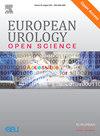转移性肾细胞癌的免疫治疗:来自荷兰全国队列的见解
IF 4.5
3区 医学
Q1 UROLOGY & NEPHROLOGY
引用次数: 0
摘要
酪氨酸激酶抑制剂(TKIs)靶向治疗是转移性肾细胞癌(mRCC)的标准治疗方法,直到最近,新的一线联合免疫肿瘤学(IO)药物被批准。我们在荷兰的常规临床实践中评估了一线和后期治疗中的IO摄取。2018年至2022年间诊断为同步mRCC的患者来自基于人群的荷兰癌症登记处(n = 2621)。中位年龄为70岁,58%的患者为透明细胞肾细胞癌。总体而言,55%的患者接受了至少一条全身性治疗,7%的患者接受了细胞减少性肾切除术而不接受全身性治疗,其余37%的患者接受了最佳支持治疗。在系统性治疗队列中,一线TKI使用率从2018年的94%下降到2022年的21%,而IO使用率从6%上升到79%。2019-2020年的数据显示,分别有32%和10%的患者接受了二线和三线治疗。同步mRCC患者的3年总生存率从2018年的20%(95%置信区间[CI] 16-23%)增加到2021年的28% (95% CI 24-33%)。我们的分析显示,自2019年以来,mRCC的IO批准已导致接受全身治疗的患者中约80%的IO使用量立即大幅增加。自2019年以来,转移性肾癌的全身治疗已经从针对特定蛋白质的药物转向免疫治疗。我们的研究结果显示,随着时间的推移,接受全身治疗的患者有更有利的特征,生存率也有所提高。本文章由计算机程序翻译,如有差异,请以英文原文为准。
Immunotherapy in metastatic renal cell carcinoma: Insights from a Dutch nationwide cohort
Targeted therapy with tyrosine kinase inhibitors (TKIs) was the standard of care for metastatic renal cell carcinoma (mRCC) until recently, when new first-line combinations with immuno-oncology (IO) agents were approved. We evaluated IO uptake in both first-line and later-line treatment in routine clinical practice in the Netherlands. Patients diagnosed with synchronous mRCC between 2018 and 2022 were identified from the population-based Netherlands Cancer Registry (n = 2621). The median age was 70 yr and 58% of patients had clear-cell RCC. Overall, 55% received at least one line of systemic therapy, 7% underwent cytoreductive nephrectomy without systemic therapy, and the remaining 37% received best supportive care. In the systemic treatment cohort, first-line TKI use decreased from 94% in 2018 to 21% in 2022, while IO use increased from 6% to 79%. Data from 2019–2020 show that 32% and 10% of patients received any second-line and third-line therapy, respectively. The 3-yr overall survival rate for patients with synchronous mRCC increased from 20% (95% confidence interval [CI] 16–23%) in 2018 to 28% in 2021 (95% CI 24–33%). Our analysis shows that IO approvals for mRCC since 2019 have led to an immediate and large increase in IO use to approximately 80% of patients who receive systemic treatment.
Patient summary
Since 2019, systemic treatments for metastatic kidney cancer have shifted from drugs targeting selected proteins to immunotherapy. Our results show trends over time for more favorable characteristics among patients receiving systemic treatment and improvements in survival.
求助全文
通过发布文献求助,成功后即可免费获取论文全文。
去求助
来源期刊

European Urology Open Science
UROLOGY & NEPHROLOGY-
CiteScore
3.40
自引率
4.00%
发文量
1183
审稿时长
49 days
 求助内容:
求助内容: 应助结果提醒方式:
应助结果提醒方式:


